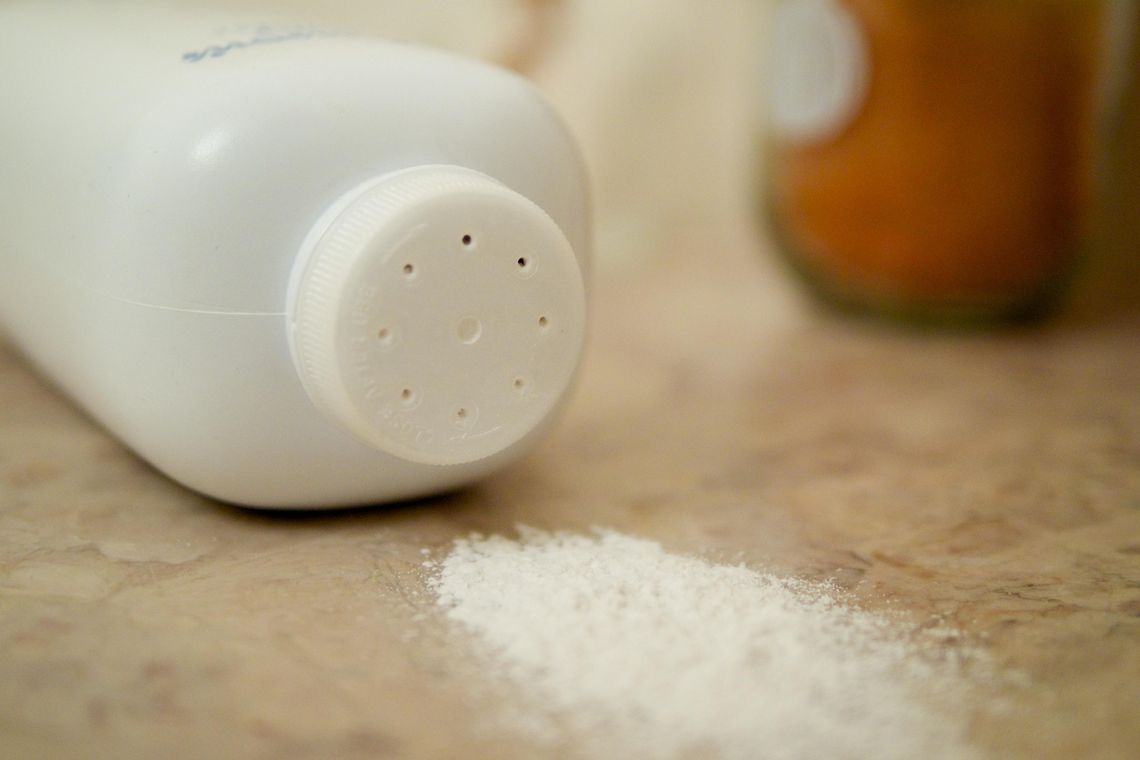We have all probably used baby powder at some point in our lives. It smells nice and it makes our skin feel smooth and dry. We use it on baby’s butts. We use it on our own bottoms. Well thanks to one lawyer last year, we may not be using it anymore.
Johnson and Johnson was handed a crushing verdict of $4.69 billion for 22 women who claimed their ovarian cancer was from years of use of talcum powder. But is talcum powder really to blame?
To win in court you don’t have to be on the side of fact or truth. You just need to make the more convincing argument. Science doesn’t work that way, though. You can’t argue your way through science. So what is the science of talcum powder?
First of all talcum powder is based on talc. Talc is just a mineral, which consists of silicon, magnesium and oxygen. Silicon is the seventh most-abundant element in the universe and the second most abundant element here on earth. Can you guess what’s the most abundant element on earth? That’s right, oxygen. So to put that in perspective, a court just said that a substance made up of two of the most abundant elements on earth is causing cancer.
There are two types of talcum powder. One version has asbestos in it and the other doesn’t. We have all heard of asbestos. We have spent decades removing it from buildings after we discovered it caused the lung cancer mesothelioma. Asbestos is a naturally occurring mineral and its needle-like structure can embed in lung tissue causing a reaction that can result in cancer. That is why in 1976, the cosmetic industry stopped using talc with asbestos in its products. So when we speak of talcum powder today we are referring to asbestos-free talc.
Miners who spend substantial amounts of time underground digging up talc have also been found to develop a condition called silicosis in their lungs. The inflammation in lung tissue from silicosis can go on to develop into lung cancer. So we know there is an association with lung cancer in people that breath in talc dust for years. We know there is an association of lung cancer in people who breathe in talc with asbestos. What we do not know yet is if there is an association of asbestos-free talcum powder and ovarian cancer.
It has been suggested that talcum powder can cause ovarian cancer in women who have applied it to their genital region or on their diaphragms. The mineral somehow travels up into the uterus and fallopian tubes and then into the ovaries. The studies used to make this association are called “case-control” studies. They recruit two groups of women. One group with ovarian cancer (cases) and another group without ovarian cancer (controls). They would then ask these women to recall whether they used talcum powder and how often. Then based on these women’s memories they found that women that remembered using talcum powder had about a 30 percent increased risk of ovarian cancer. The problem with these kinds of studies is that they are flawed and can contain bias that you cannot account for. In fact, there are several of these studies looking at the use of talcum powder and ovarian cancer and their results are mixed with some studies showing the link and others showing no link.
A better study would be a double-blinded randomized control study but what woman in her right mind would join such a study. An alternative study is one in the lab where we expose mice to talcum powder to see if they develop cancer. These studies have been done and just like the case-control studies, the results were mixed. So the take-home message here is that there is no clear association between talcum powder use and ovarian cancer.
What do the experts say? The International Agency for Research on Cancer (IARC), part of the (WHO) World Health Organization, classifies talc with asbestos as a carcinogen. They classify talc without asbestos as being not carcinogenic to humans. They classify talc used in the perineum as “possibly carcinogenic to humans.” The (CDC) Centers for Disease Control, (NIH) National Institute of Health and (FDA) Food and Drug Administration have stated they have not fully reviewed talc as possible carcinogen yet. The ACOG, American College of Obstetrics and Gynecology, have stated that after several decades of studies indicating a possible association between talcum powder and ovarian cancer there is no direct causative link.
So are you going to continue using talcum powder? Maybe. Maybe you just don’t use it specifically in your groin area until we have a definitive answer on this issue. Have a talk with your personal doctor to get their perspective. Maybe someday we will have a screening test for ovarian cancer that will make it easier to detect. For now get regular gynecologic exams. Remember to feel better.
--
Dr. John Turner is a family medicine and emergency medicine doctor with 25 years of experience. He is also the owner of My Primary Care Clinic and My Emergency Room 24/7 here in Hays County. Dr. Turner may be reached at 512-667-6087.







